The Black Family, Brigham Young’s Colonizers
After leaving Nauvoo, the family stayed in Kanesville Iowa, Now known as Council Bluffs, until the spring of 1850 when they started for Salt Lake, arriving in September. They left Salt Lake the first of November traveling to Manti, Sanpete, Utah, which was a journey of 16 days. The family built a stone home in Manti on the south side of the quarry. The Manti Church of Jesus Christ of Latter Day Saints Temple was dedicated in 1888 on the site adjacent to where the original Black family home once stood.
Settling of Spring City, Sanpete County
Spring City, which is located about 12 miles north of Manti dates back to 1852, when Pres. Brigham Young advised James Allred to select a place for a settlement where he could locate with his numerous posterity and kindred and preside over them. Complying with this advice, Father Allred, early in the spring of 1852 examined the tract of country lying along Canal Creek and finally decided on the present site of Spring City for a settlement March 22, 1852. Four days later the Allreds commenced making improvements. Spring city prospered and became known as “Little Denmark.” In 1853 the Walker Indian War broke out, which placed all settlements in the Sanpete valley in jeopardy. Being subjected to great danger, a fort was hastily built by moving all log houses together. This fort was completed July 28, 1853. Notwithstanding the precaution of building a fort, the Indians, under 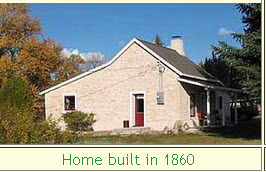 Walker, made a raid on the Allred Settlement and drove off 200 head of horned stock and 30 head of horses, which was nearly all the stock belonging to the colony. Under orders from Brigham Young, the settlement was vacated July 31, 1853. The Indians immediately burned everything the settlers had left. Practically all the Little Denmark emigrants moved to Manti. At that point in time, the entire population of Sanpete was housed in the Manti Settlement, which was about 765 men, women and children. This caused very crowded conditions in the little fort. Because of the overcrowding, Practically all the emigrants , who came to Manti for the winter, went as a colony in the spring of 1854 to a point about seven miles north of Manti. For safety sake, the Black family joined in the move.... A fort wall was constructed of stone surrounding a tract on which the Ephraim Tabernacle and City Library now stand. The wall was about nine feet high and built of limestone which was hauled from the mountains Northeast of the fort. Port holes were provided near the top of the wall …. Log and mud houses were built within the fort wall to provide for the settlers, many of whom lived in their wagons and tents … cattle were corralled in the center of the fort. Fort Ephraim became the first successful attempt towards forming a colony outside of Manti. Life in Fort Ephraim continued in pioneer fashion with much building, clearing of land, planting, and watching for Indian attacks.
Walker, made a raid on the Allred Settlement and drove off 200 head of horned stock and 30 head of horses, which was nearly all the stock belonging to the colony. Under orders from Brigham Young, the settlement was vacated July 31, 1853. The Indians immediately burned everything the settlers had left. Practically all the Little Denmark emigrants moved to Manti. At that point in time, the entire population of Sanpete was housed in the Manti Settlement, which was about 765 men, women and children. This caused very crowded conditions in the little fort. Because of the overcrowding, Practically all the emigrants , who came to Manti for the winter, went as a colony in the spring of 1854 to a point about seven miles north of Manti. For safety sake, the Black family joined in the move.... A fort wall was constructed of stone surrounding a tract on which the Ephraim Tabernacle and City Library now stand. The wall was about nine feet high and built of limestone which was hauled from the mountains Northeast of the fort. Port holes were provided near the top of the wall …. Log and mud houses were built within the fort wall to provide for the settlers, many of whom lived in their wagons and tents … cattle were corralled in the center of the fort. Fort Ephraim became the first successful attempt towards forming a colony outside of Manti. Life in Fort Ephraim continued in pioneer fashion with much building, clearing of land, planting, and watching for Indian attacks.
Just a few months after his signature was placed on the peace treaty of May 1854, Chief Walker’s life came to an end. On January 26,1855, Arropine succeeded Walker as leader at Meadow Creek in Millard County, and he with other Indians deeded Sanpete County to the LDS Church.
1859 Resettlement of Spring City
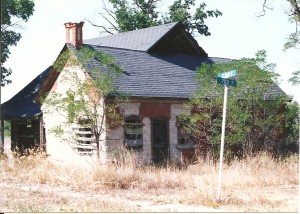 Among the first pioneers in the 1859 Resettlement was William Y. Black, an Irish convert who requested and received President Young’s approval before his move to Little Denmark from Ft. Ephraim. On July 4, 1859 William Y Black requested that he be allowed “to go to Little Denmark … only 5 or 6 miles from here” (Ft. Ephraim.” Brigham’s approval of this move came on July 12th with the clearly stated request that the Blacks did “not infringe upon the rights of previous occupants, or rightful claimants … ” Accompanying Father Black in his pioneer venture were his wife Jane J., sons George and Joseph S. and their wives, along with Joseph T. Ellis and his wife. Albert Petty, “the county surveyor … immediately commenced the survey of a townsite and also 640 acres of farming land adjoining it … Soon after the arrival of the first settlers John Lemmon and William Major arrived and subsequently Reddick N. Allred, William Hudson, John Neild, Barney Stevens, Henry Stevens, Isaac Morley Allred, Joseph Allred, Sidney R. Allred and others. ”
Among the first pioneers in the 1859 Resettlement was William Y. Black, an Irish convert who requested and received President Young’s approval before his move to Little Denmark from Ft. Ephraim. On July 4, 1859 William Y Black requested that he be allowed “to go to Little Denmark … only 5 or 6 miles from here” (Ft. Ephraim.” Brigham’s approval of this move came on July 12th with the clearly stated request that the Blacks did “not infringe upon the rights of previous occupants, or rightful claimants … ” Accompanying Father Black in his pioneer venture were his wife Jane J., sons George and Joseph S. and their wives, along with Joseph T. Ellis and his wife. Albert Petty, “the county surveyor … immediately commenced the survey of a townsite and also 640 acres of farming land adjoining it … Soon after the arrival of the first settlers John Lemmon and William Major arrived and subsequently Reddick N. Allred, William Hudson, John Neild, Barney Stevens, Henry Stevens, Isaac Morley Allred, Joseph Allred, Sidney R. Allred and others. ”
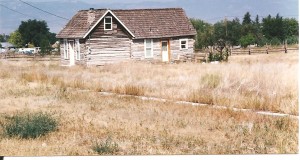 Father Black’s settlement expectations were set forth in a short letter to President Young dated August 1, 1859, as follows: “I have gon(e) to Little Denmark and has got it surveyed and is now waiting for your instructions. We expect about 30 families to go their this fall (Spelling retained). Announcement of the new settlement was made in the September 14, 1859 Deseret News which called it “Little Denmark.” Joseph T. Ellis and Reddick N. Allred reportedly built the first homes in the village and “no head of a family was allowed more than fifteen acres”26 until 1860 when “five acres more land were allowed each settler.” About this same time John Frantzen, recent Norwegian arrival, considered moving to San Pete but heard reports that the area was a “cold and disagreeable country, could raise nothing but small grain and occasionally it froze before it matured, having frost about every month in the year.” After delivering a cattle herd to Ft Ephraim he heard “that a new place was to be settled the following spring ten miles northeast of Ephraim called Springtown (Spring City) and that there would be a chance for a few to obtain land who wished. Already a few families had moved there during the summer … ” Frantzen returned with his parents a short time later to become one of Springtown’s leading citizens.
Father Black’s settlement expectations were set forth in a short letter to President Young dated August 1, 1859, as follows: “I have gon(e) to Little Denmark and has got it surveyed and is now waiting for your instructions. We expect about 30 families to go their this fall (Spelling retained). Announcement of the new settlement was made in the September 14, 1859 Deseret News which called it “Little Denmark.” Joseph T. Ellis and Reddick N. Allred reportedly built the first homes in the village and “no head of a family was allowed more than fifteen acres”26 until 1860 when “five acres more land were allowed each settler.” About this same time John Frantzen, recent Norwegian arrival, considered moving to San Pete but heard reports that the area was a “cold and disagreeable country, could raise nothing but small grain and occasionally it froze before it matured, having frost about every month in the year.” After delivering a cattle herd to Ft Ephraim he heard “that a new place was to be settled the following spring ten miles northeast of Ephraim called Springtown (Spring City) and that there would be a chance for a few to obtain land who wished. Already a few families had moved there during the summer … ” Frantzen returned with his parents a short time later to become one of Springtown’s leading citizens.
From Father Black’sprojected thirty families in 1859, Springtown grew to more than 220 in the 1860 Census. Water limitations seem to have been the principal concern in limiting the population; however, the water supply seems for the most part to have kept pace with the increasing population, but not without much work.
Excerpts from Under the Horseshoe, A History of Spring City, Kaye C. Watson
Present day there is a permanent daughters of Utah Pioneer monument on the main street in Spring City that says “In 1859 this area was settled permanently by families of James Allred, Wm. Black, James Ellis and a large Danish colony of gifted craftsmen and stone masons and others. They surveyed the land, raised abundant crops, and became known as the breadbasket of Utah. Built substantial homes and chapel of oolite stone, quarried south of town. The fort built west of the chapel in 1853 was burned by Indians.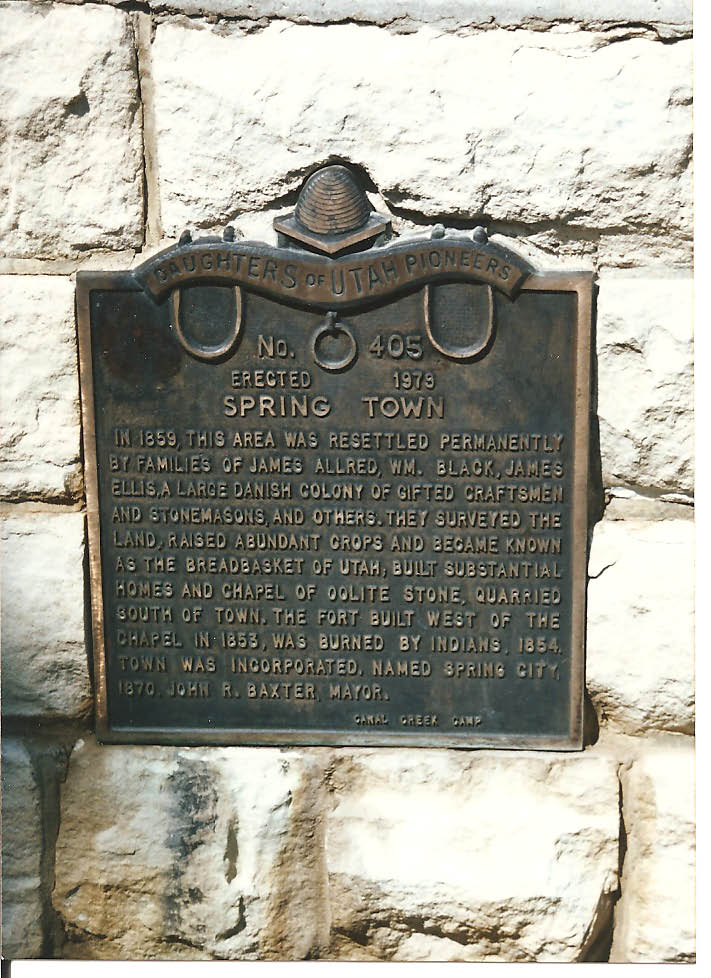
Establishing the L.D.S. Church in Spring City
After the 1859 Resettlement George Black functioned as the Presiding Elder in Little Denmark and a small log meetinghouse was erected on the Southwest corner of Block 29; however, in January 1860 a Bishop’s Ward became necessary with Christian G. Larsen coming from Ephraim to become the Bishop, with Reddick N. Allred appointed as First Counselor and Joseph S. Black as Second Counselor, and George Brough as Clerk.?”
About 1863 an adobe meetinghouse with dimensions of 30 feet by 50 feet was constructed south of our present meetinghouse as the population dictated a larger building. Henning Olson was the Master Mason, with pioneer craftsmen donating most of the labor. This building was also used as a school, dance hall and even as a meeting place for city officials. Older residents can still remember the curtains which were drawn as partitions to separate classes-and the noise level. This meetinghouse in later years was used by the Relief Society, Primary and Boy Scouts, after the 1911 completion of our present chapel. During the 1940’s the building was given or sold to Clyde Hollenbeck of Chester who dismantled it and built a small garage and other small buildings with adobes. The small garage may still be seen north of the Chester Store. As ward membership increased, more space became available, and Church headquarters became more encouragÂing and well organized, Spring Town Ward auxiliaries in turn became more fully organized
Life Under the Horseshoe, A History of Spring City, Kaye C. Watson
The Cotton Mission
When the Mormons entered the Salt Lake Valley, Brigham Young recognized the need of the pioneers for clothing as well as food. He resolved that the Latter-day Saints should be economically independent, and experiments in growing cotton in the Salt Lake Valley were implemented. Early exploration in the 1850s confirmed that the Santa Clara and Virgin river basins, located 300 miles south of Salt Lake City at a lower altitude, had the potential to grow cotton, grapes, figs, flax, hemp, rice, sugar cane, tobacco, and other much-needed semitropical products. Following the Utah War of 1857-58 Brigham Young’s drive for self-sufficiency was strengthened. By this time Parowan, New Harmony, Pine Valley, Toquerville, and Santa Clara had been established. The mission of those sent to Santa Clara was to befriend the Indians. This had to be done before cotton could be planted. However, at Santa Clara three quarts of old cotton seed were procured, planted, harvested, and ginned. The cotton was then carded, spun, and woven into thirty yards of cloth. A sample was sent to Brigham Young.
Church members were called to go to Washington County to colonize, with the specific assignment to “grow cotton.” They were told that the Cotton Mission should be considered as important to them as if they were called to preach the gospel among the nations. Settlements involved in the Cotton Mission, some now erased from memories and maps, were Washington, St. George, Heberville (Tonaquint), Parowan, Grafton, Hurricane, Santa Clara, Harrisburg, Duncan’s Retreat, West Point, Rockville, Millersburg, Shunesburg, Northrop, Springdale, Gunlock, Harmony, Kanarra, Hebron, Middleton, Pine Valley, Pinto, Leeds, Bellevue (Pintura), Panada, Eagleville, Cedar City, and Toquerville. There were also those on Muddy Creek–St. Joseph, St. Thomas, and Overton. Some of these settlements involved just a few families.
Men were chosen for their skills and capital equipment. The first calls included: ten families under the leadership of Samuel Adair left Payson 3 March 1857; twenty-eight families were called at April 1857 conference and came under the direction of Robert Covington; fifty families arrived at Washington from San Bernardino. They had been told to return to Utah because of the Utah War in 1857. Most stayed for the winter and left in the spring for other locations in Dixie and elsewhere. Three hundred families were called in October 1861 conference. That year the Civil War cut off cotton supplies.
Georgene Cahoon Evans
Settlement of Zion Canyon
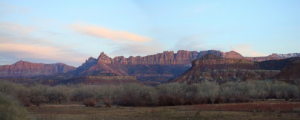 Rockville as a settlement dates back to 1861, when it was founded under the direction of the late Apostle Orson Pratt and John C. Hall. The first location made by the settlers was at a place named Adventure, but the present Rockville townsite was selected and surveyed in 1862, and about a dozen L. D. S. families spent the winter of 1862-1863 at Rockville. The original settlement of Adventure was abandoned and the people who had located there became identified with Rockville. Of those families who went up the Virgin river above Adventure, three families stopped at the forks of the Virgin at a place afterward called Northrop. While six continued up the Parunuweap four or five miles to the farm of an old Indian named Shunes, They purchased the land for a trifling consideration but the price proved to be only the first installment. For the old Indian continued to live in the vicinity for many years, working and begging for food from the whites to add to his native supply of seeds lizards and wild game. This settlement became known as Schunesburg. Nothing but memories remain of Northrop and a cemetery at what was once Schunesbury.
Rockville as a settlement dates back to 1861, when it was founded under the direction of the late Apostle Orson Pratt and John C. Hall. The first location made by the settlers was at a place named Adventure, but the present Rockville townsite was selected and surveyed in 1862, and about a dozen L. D. S. families spent the winter of 1862-1863 at Rockville. The original settlement of Adventure was abandoned and the people who had located there became identified with Rockville. Of those families who went up the Virgin river above Adventure, three families stopped at the forks of the Virgin at a place afterward called Northrop. While six continued up the Parunuweap four or five miles to the farm of an old Indian named Shunes, They purchased the land for a trifling consideration but the price proved to be only the first installment. For the old Indian continued to live in the vicinity for many years, working and begging for food from the whites to add to his native supply of seeds lizards and wild game. This settlement became known as Schunesburg. Nothing but memories remain of Northrop and a cemetery at what was once Schunesbury.
The known settlers at Northrop included James Lemon. Isaac Behunin and Joseph Black. The following went to Shunesburg. All of them having come together from San Pete Valley: Oliver DeMille, Hyrum Steves, Alma Millett, George Petty, Hardin Whitlock and Charlie Klapper. Three of Joseph S. Black’s children were born in Northrop.
The settlers were hardly located when a stormy period began. They were digging irrigation ditches and cutting timber for log houses. but were still living in their covered wagons when bad weather set in. Rain started on Christmas day. 1861. and conÂtinued for forty days. The Virgin became a raging torrent and. at least twice. Great floods washed out the dams, filled the ditches, undermined banks, overflowed the plains and despoiled valuable farm lands. On January 8. the flood inundated the village of Grafton. The water rising suddenly during the night. As the waters swirled around the wagon box home of Nathan Tenney, several men picked it up with his expectant wife in it and carried it to higher ground north of the river where a son was born. He was named. appropriately enough. Marvelous Flood Tenney.
After the floods subsided Old Grafton was abandoned and a new site was selected on the south bank on1 a higher bench a little farther upstream. The area was surveyed and laid off in town lots and fields. A new ditch costing $5.000 was dug within the next year. The new townsite of Rockville was similarly laid off into lots and fields during the summer of 1862. An irrigation ditch was completed in time for use during 1863. In the meantime the settlers at Adventure continued to cultivate the land irrigated by their first ditch. At the forks of the river at Northrop. a ditch was built by James Lemon and others to irrigate a stretch of land below the junction of the two forks of the streams. At Shunesburg. the town and fields were surveyed and ditches constructed to divert the water from both Shunes Creek and the east fork of the Virgin.
Springdale was first settled in the fall of 1862 by Albert Petty, George Petty, James H. Witlock and others, who had been called, with many others, as missionaries from the northern parts of Utah to settle Dixie or southern Utah. Most of those mentioned had spent the summer in Shunesburg and had moved over from that place to the north fork of the Rio Virgin. It is related that Albert Petty took his wife to the spot he had selected beside some large springs and asked her to name it. She called it Springdale. William Black and others came later from Sanpete County, and perhaps 20 families in all spent the winter of 1862, 1863 on the North Fork. They located near the fine springs which still exist near the village of Springdale. Other settlers arrived in 1863 and a town site was surveyed that year.
E. C. Behunin says that his father, Isaac. Stayed at Northrop until after the flood and then moved to Springdale where others had already located. It is probable however, that the lower Springdale irrigation ditch was taken early in 1862. It is also probable that Joseph Black came with the main group in 1861, despite his journal date of 1862, written in his old age.His parents came in 1861 and it is almost certain that he was with them. He is credited by three different sources with being the first to explore Zion Canyon after the settlers arrived. The passage to the upper Zion canyon, which was called “Joseph’s Glory,” is through the narrows.
The fall of 1862 saw another influx of settlers. Another genÂeral “call” for 250 men to go south was issued Sunday. October 19, and many others volunteered to go to Dixie. Charles L. Walker describes the incident in his journal:
Sunday, October 19, 1862 …. Went up to the Bowery…. At the close of the meeting. 250 men were called to go to the cotton country. My name was on the list and was read off the stand. At night I went to a meeting in the Tabernacle of those who had been called. Here I learned a principle that I shan’t forget in a while. It showed me that obedience is a great principle in Heaven and on earth. ‘Well, here I have worked for the last seven years. Through heat and cold, hunger and adverse circumstances. And at last have a home and a lot with fruit trees just beginning to bear and look pretty. Well, I must leave it and go and do the will of my Father in Heaven … and I pray God to give me strength to accomplish that which is required of me.
The spirit of “moving south” had been encouraged by the previous year’s migration and many had become interested, some because of friends or relatives who had preceded them, others because of crop losses or because they were seeking better places to locate. John Langston, who came to Rockville at this time, says in his journal that he had tired of having his crops eaten up by crickets at Alpine, Utah County, so tried farming at Draper. His crops in 1862 were destroyed by flooding of the Jordan River, so he volunteered and was “called” on the mission to settle Dixie.”‘
These recruits enlarged the settlements even to overcrowding. Rockville suddenly expanded by the abandonment of Adventure and the influx of new settlers to a town of nearly thirty families.” Shunesburg increased to fifteen or sixteen and the others in proportion.” The townsite and fields of early Springdale were surveyed during the fall and winter of 1862-63. and a town of some twenty families was established. with Albert Petty as presiding elder.”
“Charles L. Walker, “Journal” (copy in the files of the Utah State HisÂtorical Society, Salt Lake City, Utah).
John Langston. “History of John Langston” (Ms. in files of Utah State Historical Society).
William Y Black died 28 Jan 1873 in Rockville Utah. Jane Johnston Black moved to Deseret Utah to be with her son and his family. Jane died 20 Jan 1890 in Deseret Utah. She had requested that she be brought back to Rockville to be buried next to her eternal companion. Â It is said that she had a smile on her face all the way back to Rockville.
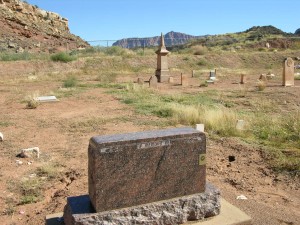 These lines may be found on William Y Black and Jane Johnston Black’s tombstone in the Rockville cemetery:
These lines may be found on William Y Black and Jane Johnston Black’s tombstone in the Rockville cemetery:
“A noble veteran lieth here,
His name and acts the Saints revere.
He’s blest with honors of the the best,
with his armour bright, he’s gone to rests.”
The present headstone in Rockville is marble. The original headstone is aon display in the Utah Territorial State house in Fillmore, Utah.
Springdale, Washington County, Utah
Springdale is a town in Washington County,Utah. It is located immediately outside the boundaries of Zion National Park, and is oriented around the resulting tourist industry. It was originally settled as a Mormon farming community. Springdale was named one of the 20 ‘prettiest towns’ in the United States by Forbes Traveler in 2008.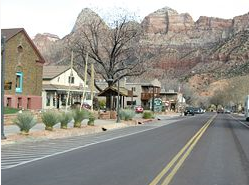
Rockville, Washington County, Utah
Rockville is situated in the narrow Rio Virgin Valley on the north banks of said stream. The farming land belonging to the settlement consists of narrow strips on both sides of the river, where the valley is scarcely a mile wide. The gardens and farms of Rockville are irrigated from the Rio Virgen and its north fork. Rockville is 10 miles up the Rio Virgen from Virgin City, 20 miles southeast of Toquerville, 15 miles east of Hurricane, and 43 miles northeast of St. George. The people of Rockville have always had great trouble in controlling the waters of the Rio Virgin. Nevertheless Rockville can boast of the finest location for a town on that river. There are many comfortable private residences in Rockville, consisting of adobe, rock and lumber houses. Rockville is on the main highway leading to Zion Park.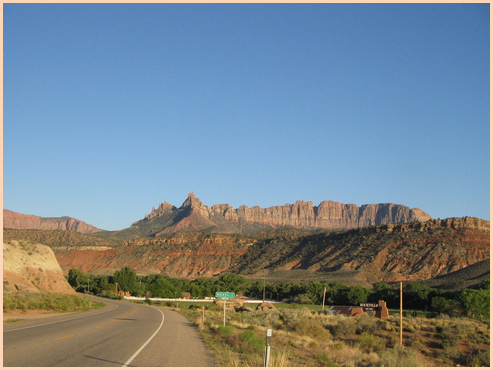
Manti LDS Temple, as it is today
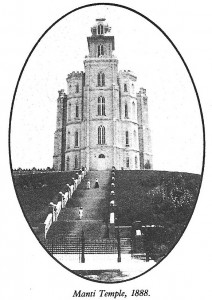
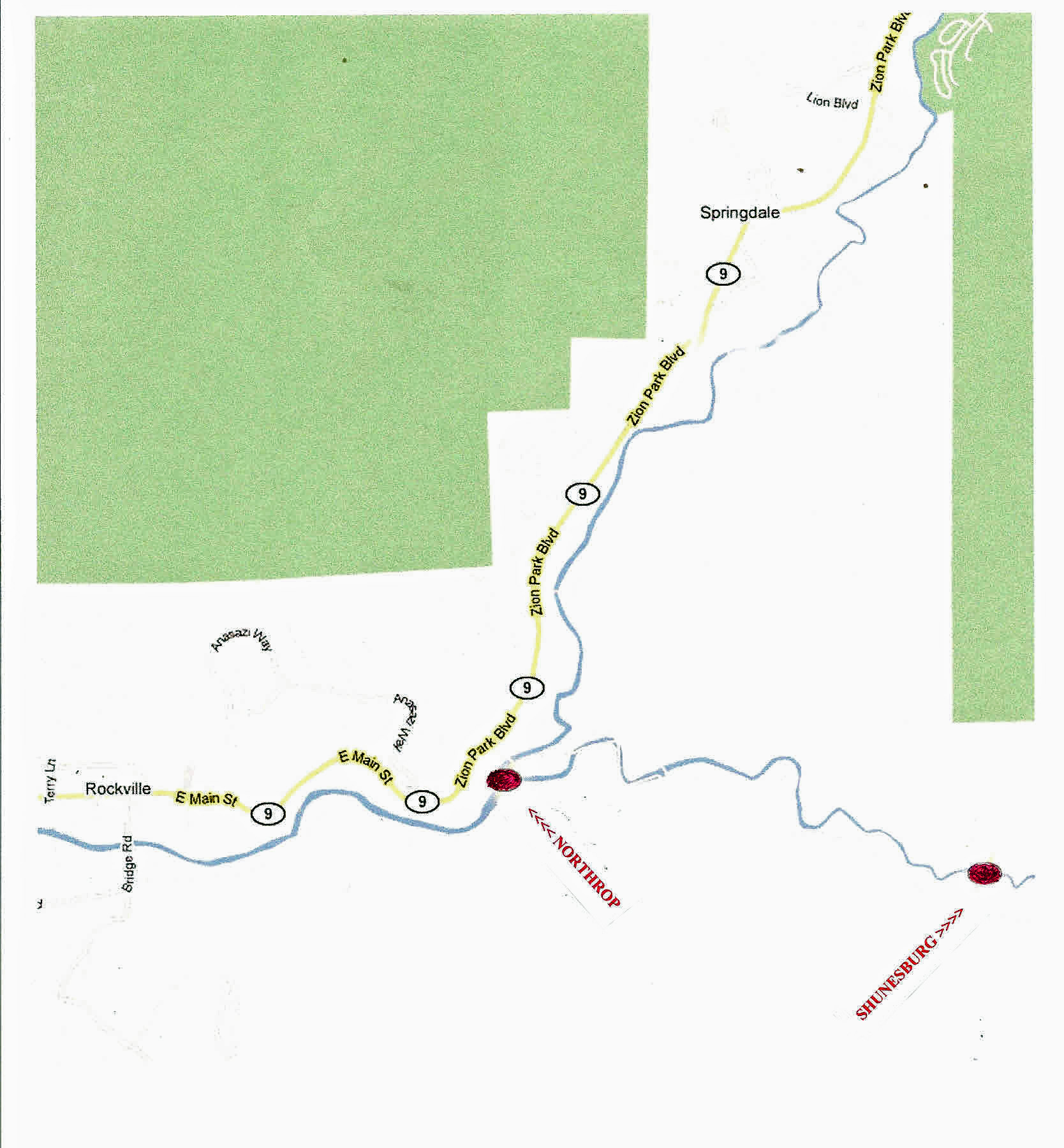
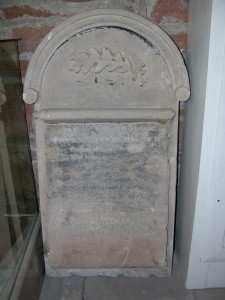
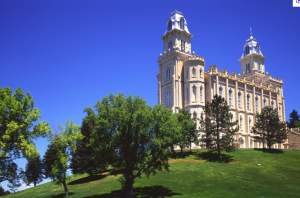
/-113.5083,37.1305,12/300x200@2x.png?access_token=pk.eyJ1IjoiamJlcmdlbiIsImEiOiJjanRxb3d1NWgwaHBuM3lvMzJ3emtyNWY4In0.xCCZGVjZrBAKn5C_O6q8CA)